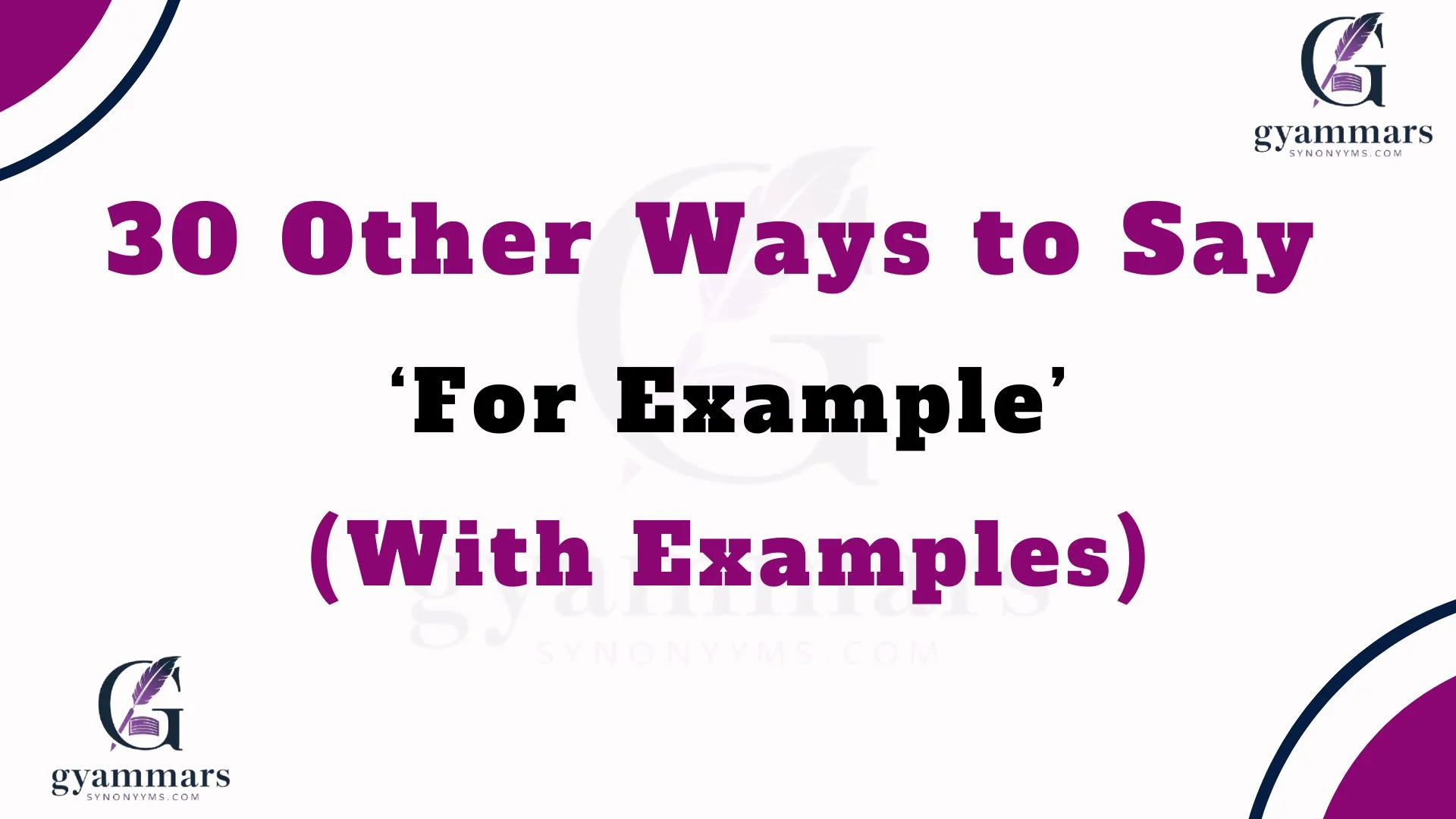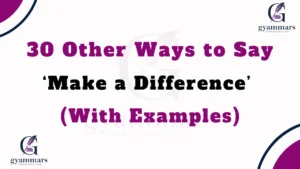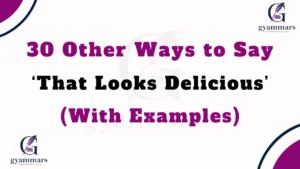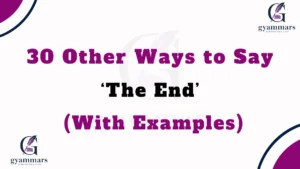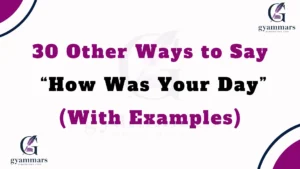When writing an essay, finding the right words is about more than grammar and clarity—it’s also about showing care, thoughtfulness, and intent in how you express your ideas. Using alternatives to “for example” can make your writing feel warmer, more professional, and more engaging. These variations allow you to set the right tone for academic essays, reflective writing, or professional communication. Below, we’ll explore 30 meaningful alternatives, each with explanations and examples so you can confidently choose the right phrase for your context.
What Does “For Example” Mean?
The phrase “for example” is used to introduce specific instances that support or illustrate a broader point. It helps the reader better understand the argument by connecting abstract ideas with concrete cases.
Is It Professional/Polite to Say “For Example”?
Yes—using “for example” is both professional and polite. However, overusing it can make your writing sound repetitive. That’s why having a range of alternatives helps you sound polished and intentional in your communication.
Pros or Cons of Using “For Example”
Pros:
- Clear and widely understood.
- Fits both formal and casual writing.
- Effective for explaining complex ideas.
Cons:
- Can feel repetitive in essays if overused.
- May lack variety in tone compared to other synonyms.
Synonyms:‘For Example’ in an Essay
- For Instance
- Such As
- Namely
- To Illustrate
- In Particular
- In Other Words
- As An Illustration
- Specifically
- Take the Case Of
- As An Example
- By Way of Example
- To Give You an Idea
- Consider
- For Purposes Of Illustration
- As Proof
- To Put It Simply
- To Demonstrate
- Notably
- To Clarify
- For Purposes Of Explanation
- Take, For Example
- In Support Of This
- In Evidence
- As Evidence
- Case in Point
- As Shown By
- By Way of Demonstration
- In Illustration
- Let’s Say
- Imagine
1. For Instance
Definition: A phrase used to introduce a single, specific case of something.
Explanation: Similar to “for example,” but often feels slightly more formal.
Scenario Example: “Many countries face climate challenges. For instance, Bangladesh struggles with frequent flooding.”
Best Use: Academic essays, professional reports.
Tone: Neutral, formal.
Additional Notes: Works well in both casual and formal contexts.
2. Such As
Definition: A phrase that introduces specific examples within a category.
Explanation: Often used in lists to highlight relevant items.
Scenario Example: “Many fruits are rich in Vitamin C, such as oranges, kiwis, and strawberries.”
Best Use: Formal and casual essays, explanatory writing.
Tone: Informative, straightforward.
Additional Notes: Best when giving a short list.
3. Namely
Definition: A phrase used to introduce an exact detail or clarification.
Explanation: Stronger than “for example” because it specifies.
Scenario Example: “Three countries lead in space exploration, namely the USA, Russia, and China.”
Best Use: Formal essays, academic writing.
Tone: Precise, academic.
Additional Notes: Avoid overuse; feels formal.
4. To Illustrate
Definition: Introduces an example that clarifies an argument.
Explanation: Adds a storytelling tone by emphasizing explanation.
Scenario Example: “To illustrate, consider how social media influences daily decision-making.”
Best Use: Academic and reflective essays.
Tone: Explanatory, illustrative.
Additional Notes: Best for detailed explanations.
5. In Particular
Definition: Highlights a specific detail or focus point.
Explanation: Emphasizes one important case rather than multiple.
Scenario Example: “Many artists influenced the movement, in particular Van Gogh.”
Best Use: Essays that focus on narrowing down a point.
Tone: Focused, formal.
Additional Notes: Use when emphasizing one case.
6. In Other Words
Definition: Used to reframe or clarify an idea with an example.
Explanation: Feels conversational but also clarifies meaning.
Scenario Example: “Photosynthesis creates energy. In other words, plants turn sunlight into food.”
Best Use: Explanatory essays.
Tone: Conversational, clear.
Additional Notes: Use sparingly in academic essays.
7. As An Illustration
Definition: Introduces a case that serves as proof or demonstration.
Explanation: Adds a slightly formal academic tone.
Scenario Example: “As an illustration, Newton’s laws explain everyday motion.”
Best Use: Academic writing, professional documents.
Tone: Formal, explanatory.
Additional Notes: Great for educational contexts.
8. Specifically
Definition: Draws attention to one precise example.
Explanation: Focuses the reader’s attention on a single detail.
Scenario Example: “Specifically, renewable energy reduces long-term environmental costs.”
Best Use: Persuasive and argumentative essays.
Tone: Strong, direct.
Additional Notes: Good for narrowing scope.
9. Take the Case Of
Definition: A phrase inviting the reader to consider an example.
Explanation: Slightly conversational, guiding tone.
Scenario Example: “Take the case of students who balance work and study.”
Best Use: Narrative or reflective essays.
Tone: Engaging, approachable.
Additional Notes: Not too formal, best for storytelling.
10. As An Example
Definition: A simple synonym for “for example.”
Explanation: Straightforward, widely understood.
Scenario Example: “As an example, global warming affects coastal cities first.”
Best Use: General essays, reports.
Tone: Neutral, clear.
Additional Notes: Safe alternative to avoid repetition.
11. By Way of Example
Definition: Introduces an example with a formal tone.
Explanation: Adds sophistication compared to “for example.”
Scenario Example: “By way of example, consider how education impacts social mobility.”
Best Use: Formal academic essays.
Tone: Polished, academic.
Additional Notes: Strong for serious topics.
12. To Give You an Idea
Definition: Provides a relatable explanation through an example.
Explanation: Makes writing conversational and approachable.
Scenario Example: “To give you an idea, one solar panel can power an entire household.”
Best Use: Informal essays, speeches.
Tone: Friendly, explanatory.
Additional Notes: Best for casual writing.
13. Consider
Definition: Invites the reader to reflect on an example.
Explanation: Adds depth and encourages critical thinking.
Scenario Example: “Consider the impact of technology on modern education.”
Best Use: Argumentative essays.
Tone: Reflective, persuasive.
Additional Notes: Encourages active engagement.
14. For Purposes Of Illustration
Definition: Introduces an example specifically for explanation.
Explanation: Sounds formal and professional.
Scenario Example: “For purposes of illustration, let’s examine workplace diversity.”
Best Use: Academic and business writing.
Tone: Formal, professional.
Additional Notes: Excellent for structured essays.
15. As Proof
Definition: Uses an example as evidence for a claim.
Explanation: Stronger than “for example” because it stresses proof.
Scenario Example: “As proof, recent studies confirm the rise in ocean temperatures.”
Best Use: Persuasive essays, research writing.
Tone: Assertive, factual.
Additional Notes: Avoid casual essays.
16. To Put It Simply
Definition: Explains through a clear, simplified example.
Explanation: Great for breaking down complex topics.
Scenario Example: “To put it simply, democracy means citizens have a voice.”
Best Use: Essays explaining complex ideas.
Tone: Approachable, explanatory.
Additional Notes: Not too formal.
17. To Demonstrate
Definition: Highlights an example as a form of evidence.
Explanation: Stronger, formal alternative.
Scenario Example: “To demonstrate, new policies have already reduced emissions.”
Best Use: Academic writing.
Tone: Formal, factual.
Additional Notes: Great in research-based writing.
18. Notably
Definition: Emphasizes a striking or important example.
Explanation: Draws focus to one strong detail.
Scenario Example: “Notably, Einstein challenged classical physics.”
Best Use: Essays highlighting key ideas.
Tone: Formal, focused.
Additional Notes: Good for persuasive impact.
19. To Clarify
Definition: Uses an example to explain something better.
Explanation: Adds clarity for complex ideas.
Scenario Example: “To clarify, renewable energy reduces carbon output.”
Best Use: Expository writing.
Tone: Clear, approachable.
Additional Notes: Useful in teaching.
20. For Purposes Of Explanation
Definition: Introduces examples to explain.
Explanation: Very formal version.
Scenario Example: “For purposes of explanation, this graph shows unemployment trends.”
Best Use: Research essays, reports.
Tone: Professional, serious.
Additional Notes: Strong for technical essays.
21. Take, For Example
Definition: Conversational variant of “for example.”
Explanation: Makes writing sound natural.
Scenario Example: “Take, for example, the challenges of urban pollution.”
Best Use: Reflective or persuasive essays.
Tone: Friendly, engaging.
Additional Notes: Avoid overuse in formal work.
22. In Support Of This
Definition: Introduces evidence.
Explanation: Shows an example that strengthens an argument.
Scenario Example: “In support of this, researchers found clear links.”
Best Use: Argumentative essays.
Tone: Persuasive, assertive.
Additional Notes: Good for debate-style writing.
23. In Evidence
Definition: Uses an example as proof.
Explanation: Emphasizes supporting details.
Scenario Example: “In evidence, the data shows poverty rates declining.”
Best Use: Academic and research writing.
Tone: Formal, factual.
Additional Notes: Strong but formal.
Also Read This : 30 Other Ways to Say ‘That Sucks’ (With Examples)
24. As Evidence
Definition: Provides an example to serve as proof.
Explanation: Similar to “in evidence,” but more direct.
Scenario Example: “As evidence, rising sea levels confirm climate change.”
Best Use: Persuasive essays.
Tone: Strong, factual.
Additional Notes: Best for scientific arguments.
25. Case in Point
Definition: Introduces a relevant example.
Explanation: Highlights one strong supporting detail.
Scenario Example: “Case in point: digital learning improved student access.”
Best Use: Both formal and informal essays.
Tone: Balanced, engaging.
Additional Notes: Works well in speeches too.
26. As Shown By
Definition: Uses an example as proof.
Explanation: Puts focus on supporting evidence.
Scenario Example: “As shown by recent studies, exercise improves mental health.”
Best Use: Research and academic essays.
Tone: Factual, neutral.
Additional Notes: Best for evidence-heavy writing.
27. By Way of Demonstration
Definition: Offers an example as proof.
Explanation: Formal, professional phrase.
Scenario Example: “By way of demonstration, this chart illustrates the trend.”
Best Use: Technical essays.
Tone: Formal, professional.
Additional Notes: Works well with visuals.
28. In Illustration
Definition: Highlights an example to explain.
Explanation: Formal synonym for “to illustrate.”
Scenario Example: “In illustration, consider how vaccines eradicate disease.”
Best Use: Academic writing.
Tone: Professional, polished.
Additional Notes: Ideal for scholarly tone.
29. Let’s Say
Definition: Uses a hypothetical example.
Explanation: Conversational, engaging.
Scenario Example: “Let’s say you double your savings every year.”
Best Use: Informal essays, storytelling.
Tone: Casual, relatable.
Additional Notes: Avoid in formal essays.
30. Imagine
Definition: Invites the reader to visualize an example.
Explanation: Engages readers with creativity.
Scenario Example: “Imagine a city where all cars are electric.”
Best Use: Narrative or persuasive essays.
Tone: Inspiring, creative.
Additional Notes: Best for engaging writing.
Conclusion
Using alternatives to “for example” in your essay not only prevents repetition but also helps you choose the right tone for your writing—whether you want to sound professional, explanatory, persuasive, or conversational. Each synonym carries its own weight and personality. By carefully selecting these alternatives, you show your readers that you’re not just writing to explain, but also to connect meaningfully.

“Mia Rose at Grammar Synonyms is your ultimate guide to mastering language with style and precision. Whether you’re looking to enhance your vocabulary, perfect your grammar, or discover the ideal synonym, Mia Rose offers expert resources and creative solutions to help you express yourself flawlessly. With Grammar Synonyms, unlock a world of language possibilities and elevate every piece of writing you create.
